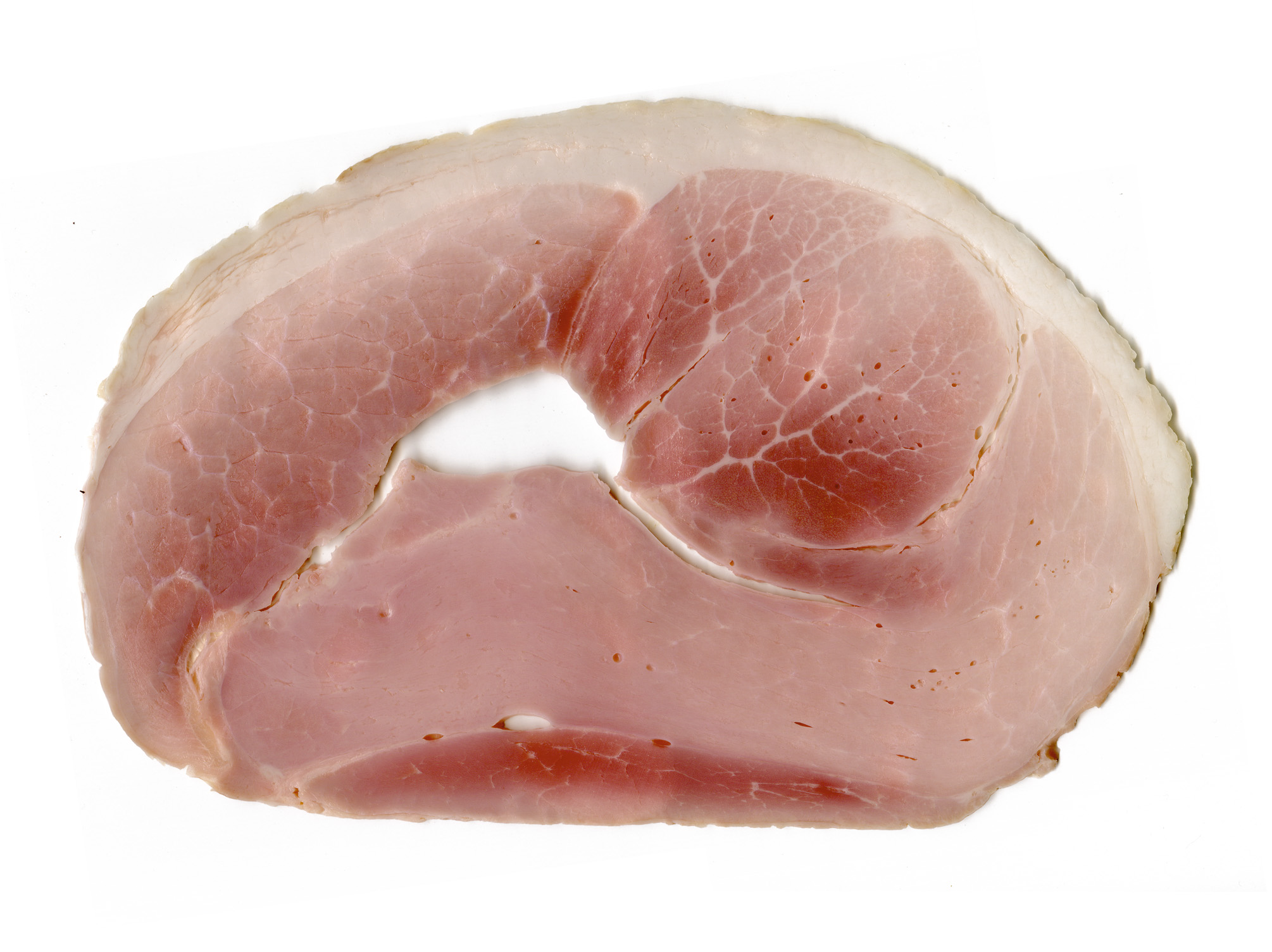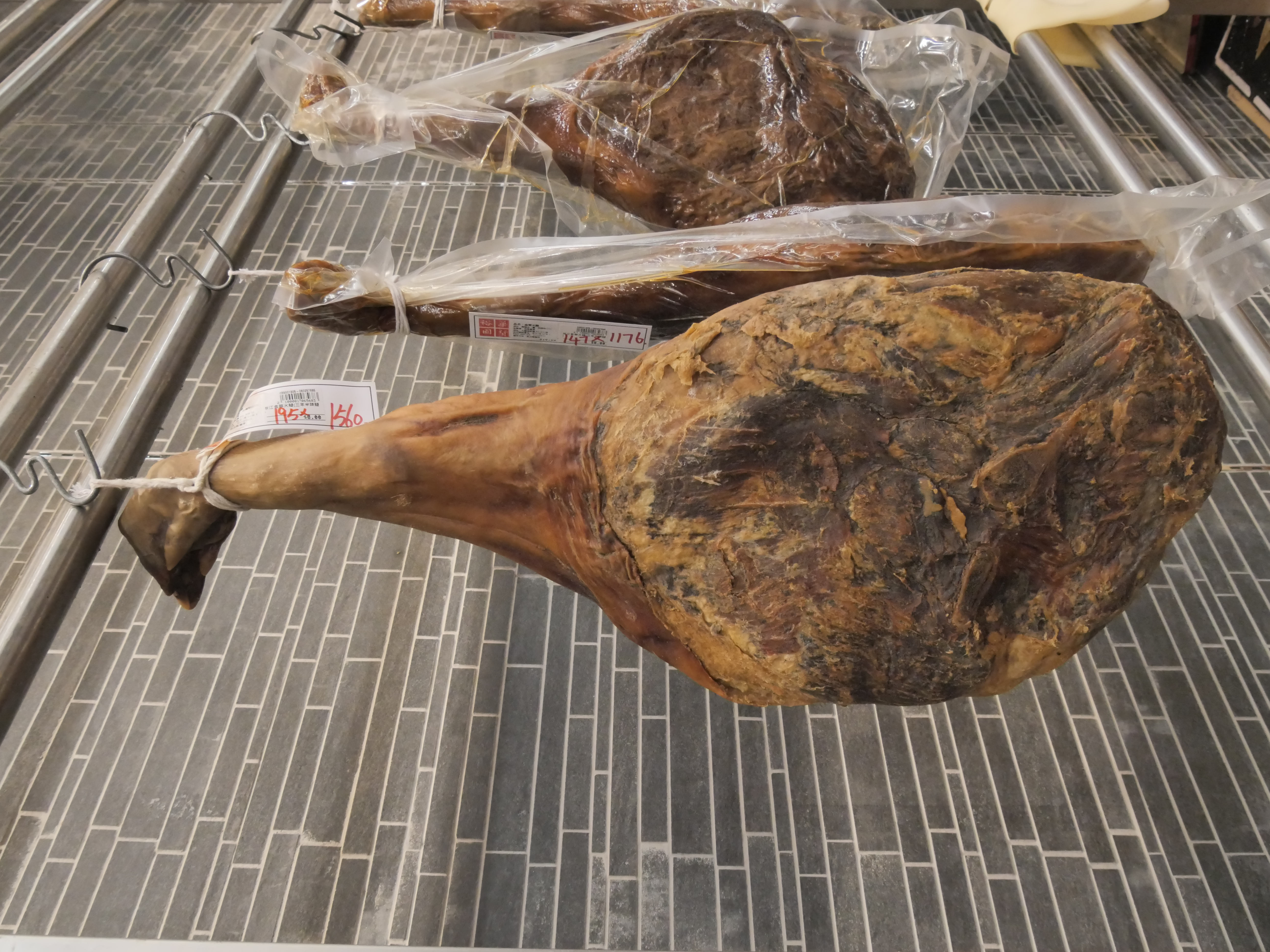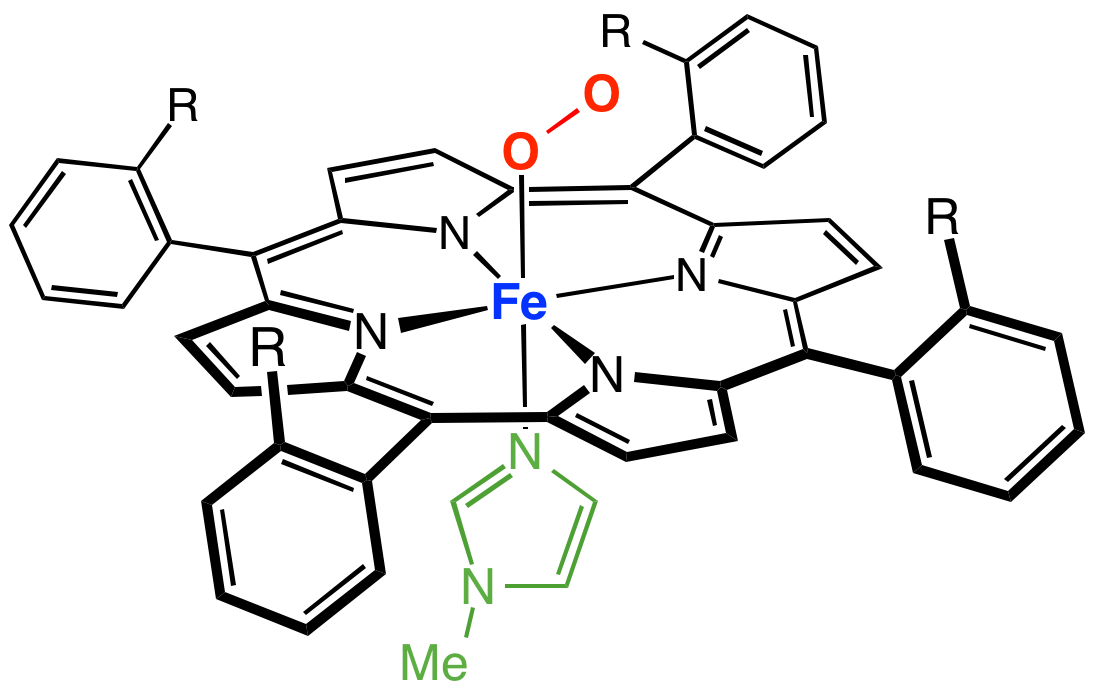|
Ham
Ham is pork from a leg cut that has been preserved by wet or dry curing, with or without smoking."Bacon: Bacon and Ham Curing" in '' Chambers's Encyclopædia''. London: George Newnes, 1961, Vol. 2, p. 39. As a processed meat, the term ''ham'' includes both whole cuts of meat and ones that have been mechanically formed. Ham is made around the world, including a number of regional specialties. In addition, numerous ham products have specific geographical naming protection. History The preserving of pork leg as ham has a long history, with traces of production of cured ham among the Etruscan civilization known in the 6th and 5th century BC. Cato the Elder wrote about the "salting of hams" in his ' tome around 160 BC. There are claims that the Chinese were the first people to mention the production of cured ham. ' claims an origin from Gaul. It was certainly well established by the Roman period, as evidenced by an import trade from Gaul mentioned by Marcus Terentius Varr ... [...More Info...] [...Related Items...] OR: [Wikipedia] [Google] [Baidu] |
Jinhua Ham
Jinhua ham () is a type of specialty dry-cured ham named after the city of Jinhua, where it is produced, in Zhejiang province, China. The ham is used in Chinese cuisines to flavor stewed and braised foods as well as for making the stocks and broths of many Asian soup#Traditional soup bases, Chinese soups. The ham was awarded first prize in the Panama–Pacific International Exposition, 1915 Panama International Merchandise Exhibition. Production Jinhua ham is traditionally produced using the hind legs of a breed of pig native to China known as the "two ends black" (兩頭烏), which have black hair growing on their heads and hindquarters with white midsections. This breed is quick to mature; it has excellent meat quality and thin skin. Ham production begins when air temperatures drop below . The process takes approximately 8 to 10 months to complete. Ham production is separated into six stages, starting in the winter and ending the following autumn: #Meat preparation: Well ... [...More Info...] [...Related Items...] OR: [Wikipedia] [Google] [Baidu] |
Jamón Ibérico
Jamón ibérico (; Spanish for "Iberian Ham"), known in Portuguese as presunto ibérico (), is a variety of ''jamón'' or ''presunto'', a type of Curing (food preservation), cured leg of pork (primarily Black Iberian pigs) produced in Spain and Portugal, in the Iberian Peninsula. It is considered a staple of both Portuguese cuisine and Spanish cuisine. Description According to Spain's ''denominación de origen'' rules and current regulations on ''jamón'', the Ham#Dry-cured, dry-cured jamón ibérico must be made from either pure breed Black Iberian pigs or cross-bred pigs at least 50% Black Iberian mixed only with Duroc pigs, the same restriction as required to keep official ''ibérico'' denomination on any Spanish pork meat product. Jamón ibérico, especially the one labeled ''de bellota'', has a smooth texture, rich, savoury taste, and regular marbled meat, marbling. The fat content is relatively high compared to Jamón#Jamón serrano, jamón serrano. Production Location Th ... [...More Info...] [...Related Items...] OR: [Wikipedia] [Google] [Baidu] |
Cut Of Pork
File:British Pork Cuts.svg, 400px, British cuts of pork poly 187 219 187 194 173 196 Trotters poly 372 226 373 207 361 204 359 216 Trotters poly 171 141 166 104 287 117 294 152 Belly poly 167 102 178 27 315 23 274 102 Loin poly 361 201 371 181 394 177 373 201 Hock poly 174 191 163 182 174 173 178 184 Hock poly 387 172 372 156 371 149 387 137 407 85 368 61 370 43 328 27 315 38 302 137 343 172 Leg / Ham desc none The cuts of pork are the different parts of the pig which are consumed as food by humans. The terminology and extent of each cut varies from country to country. There are between four and six primal cuts, which are the large parts in which the pig is first cut: the shoulder (blade and picnic), loin, belly (spare ribs and side) and leg.Cattleman's Beef Board & National Cattlemen's Beef AssociationUniform Retail Meat Identity Standards. Retrieved 11 July 2007. These are often sold wholesale, as are other parts of the pig with less meat, such as the head, feet and t ... [...More Info...] [...Related Items...] OR: [Wikipedia] [Google] [Baidu] |
Prosciutto
Prosciutto ( ; ), also known as ''prosciutto crudo'', is an uncooked, unsmoked, and dry-cured ham. It is usually served thinly sliced. Several regions in Italy have their own variations of ''prosciutto crudo'', each with degrees of protected status, but the most prized are ''Prosciutto di Parma'' DOP, from Emilia-Romagna, and ''Prosciutto di San Daniele'' DOP, from Friuli-Venezia Giulia. Unlike speck ( Speck Alto Adige) from the South Tyrol region, prosciutto is not smoked. There is also a tradition of making prosciutto in southern Switzerland. In Italian, ''prosciutto'' means any type of ham, either dry-cured (''prosciutto crudo'' or simply ''crudo'') or cooked (''prosciutto cotto''), but in English-speaking countries, it usually means either Italian ''prosciutto crudo'' or similar hams made elsewhere. However, the word ''prosciutto'' itself is not protected; cooked ham may legally be, and in practice is, sold as ''prosciutto'' (usually as ''prosciutto cotto'', and from I ... [...More Info...] [...Related Items...] OR: [Wikipedia] [Google] [Baidu] |
Jamón
''Jamón'' (; : ''jamones'') is a type of dry-cured ham produced in Spain. It is one of the most globally recognized food items of Spanish cuisine. It is also regularly a component of tapas. ''Jamón'' is the Spanish word for ' ham'. As such, other ham products produced or consumed in Spanish-speaking countries are also called by this name. In Spain, the term ''jamón serrano'' is sometimes used to avoid confusions. Spanish dry-cured ham comes in a wide range of prices and qualities; as of 2019, typical prices ranged from €5.00 to €75.00 per kilogram, depending on a number of points, such as length of curing time, breed of pig, or type of animal feeding. Description ''Jamón'' is typically consumed in slices, either manually carved from a pig's hind leg held on a ''jamonero'' stand using a sharp thin slicing knife, or cut from the deboned meat with a meat slicer. It is also regularly consumed in any shape in small portions. As a product, ''jamón'' is similar to P ... [...More Info...] [...Related Items...] OR: [Wikipedia] [Google] [Baidu] |
Pork
Pork is the culinary name for the meat of the pig (''Sus domesticus''). It is the most commonly consumed meat worldwide, with evidence of pig animal husbandry, husbandry dating back to 8000–9000 BCE. Pork is eaten both freshly cooked and preserved; Curing (food preservation), curing extends the shelf life of pork products. Ham, Gammon (meat), gammon, bacon, and sausage, pork sausage are examples of preserved pork. Charcuterie is the branch of cooking devoted to prepared meat products, many from pork. Pork is the most popular meat in the Western world, particularly in Central Europe. It is also very popular in East Asia, East and Southeast Asia (Mainland Southeast Asia, Philippines, Singapore, and East Timor). The meat is highly prized in Asian cuisines, especially in China (including Hong Kong) and Northeast India, for its fat content and texture. Some religions and cultures Religious restrictions on the consumption of pork, prohibit pork consumption, notably Islami ... [...More Info...] [...Related Items...] OR: [Wikipedia] [Google] [Baidu] |
Old English
Old English ( or , or ), or Anglo-Saxon, is the earliest recorded form of the English language, spoken in England and southern and eastern Scotland in the Early Middle Ages. It developed from the languages brought to Great Britain by Anglo-Saxon settlers in the mid-5th century, and the first Old English literature dates from the mid-7th century. After the Norman Conquest of 1066, English was replaced for several centuries by Anglo-Norman language, Anglo-Norman (a langues d'oïl, type of French) as the language of the upper classes. This is regarded as marking the end of the Old English era, since during the subsequent period the English language was heavily influenced by Anglo-Norman, developing into what is now known as Middle English in England and Early Scots in Scotland. Old English developed from a set of Anglo-Frisian or Ingvaeonic dialects originally spoken by Germanic tribes traditionally known as the Angles (tribe), Angles, Saxons and Jutes. As the Germanic settlers ... [...More Info...] [...Related Items...] OR: [Wikipedia] [Google] [Baidu] |
Food Preservation
Food preservation includes processes that make food more resistant to microorganism growth and slow the redox, oxidation of fats. This slows down the decomposition and rancidification process. Food preservation may also include processes that inhibit visual deterioration, such as the enzymatic browning reaction in apples after they are cut during food preparation. By preserving food, food waste can be reduced, which is an important way to decrease production costs and increase the efficiency of food systems, improve food security and nutrition and contribute towards environmental sustainability. For instance, it can reduce the Environmental impact of agriculture, environmental impact of food production. Many processes designed to preserve food involve more than one food preservation method. Preserving fruit by turning it into jam, for example, involves boiling (to reduce the fruit's moisture content and to kill bacteria, etc.), sugaring (to prevent their re-growth) and sealing wi ... [...More Info...] [...Related Items...] OR: [Wikipedia] [Google] [Baidu] |
Amino Acid
Amino acids are organic compounds that contain both amino and carboxylic acid functional groups. Although over 500 amino acids exist in nature, by far the most important are the 22 α-amino acids incorporated into proteins. Only these 22 appear in the genetic code of life. Amino acids can be classified according to the locations of the core structural functional groups ( alpha- , beta- , gamma- amino acids, etc.); other categories relate to polarity, ionization, and side-chain group type ( aliphatic, acyclic, aromatic, polar, etc.). In the form of proteins, amino-acid '' residues'' form the second-largest component (water being the largest) of human muscles and other tissues. Beyond their role as residues in proteins, amino acids participate in a number of processes such as neurotransmitter transport and biosynthesis. It is thought that they played a key role in enabling life on Earth and its emergence. Amino acids are formally named by the IUPAC- IUBMB Joint Commi ... [...More Info...] [...Related Items...] OR: [Wikipedia] [Google] [Baidu] |
Myoglobin
Myoglobin (symbol Mb or MB) is an iron- and oxygen-binding protein found in the cardiac and skeletal muscle, skeletal Muscle, muscle tissue of vertebrates in general and in almost all mammals. Myoglobin is distantly related to hemoglobin. Compared to hemoglobin, myoglobin has a higher affinity for oxygen and does not have cooperative binding with oxygen like hemoglobin does. Myoglobin consists of non-polar amino acids at the core of the globulin, where the heme group is non-covalently bounded with the surrounding polypeptide of myoglobin. In humans, myoglobin is found in the bloodstream only after Strain (injury), muscle injury. (Google books link is the 2008 edition) High concentrations of myoglobin in muscle cells allow organisms to hold their breath for a longer period of time. Diving mammals such as whales and seals have muscles with particularly high abundance of myoglobin. Myoglobin is found in Type I muscle, Type II A, and Type II B; although many older texts describe myo ... [...More Info...] [...Related Items...] OR: [Wikipedia] [Google] [Baidu] |
Nitrite
The nitrite polyatomic ion, ion has the chemical formula . Nitrite (mostly sodium nitrite) is widely used throughout chemical and pharmaceutical industries. The nitrite anion is a pervasive intermediate in the nitrogen cycle in nature. The name nitrite also refers to organic compounds having the –ONO group, which are esters of nitrous acid. Production Sodium nitrite is made industrially by passing a mixture of nitrogen oxides into aqueous sodium hydroxide or sodium carbonate solution: : : The product is purified by recrystallization. Alkali metal nitrites are thermally stable up to and beyond their melting point (441 °C for KNO2). Ammonium nitrite can be made from dinitrogen trioxide, N2O3, which is formally the anhydride of nitrous acid: :2 NH3 + H2O + N2O3 → 2 NH4NO2 Structure The nitrite ion has a symmetrical structure (C2v molecular point group, symmetry), with both N–O bonds having equal length and a bond angle of about 115°. In valence bond theory, it is ... [...More Info...] [...Related Items...] OR: [Wikipedia] [Google] [Baidu] |
Carcinogen
A carcinogen () is any agent that promotes the development of cancer. Carcinogens can include synthetic chemicals, naturally occurring substances, physical agents such as ionizing and non-ionizing radiation, and biologic agents such as viruses and bacteria. Most carcinogens act by creating mutations in DNA that disrupt a cell's normal processes for regulating growth, leading to uncontrolled cellular proliferation. This occurs when the cell's DNA repair processes fail to identify DNA damage allowing the defect to be passed down to daughter cells. The damage accumulates over time. This is typically a multi-step process during which the regulatory mechanisms within the cell are gradually dismantled allowing for unchecked cellular division. The specific mechanisms for carcinogenic activity is unique to each agent and cell type. Carcinogens can be broadly categorized, however, as activation-dependent and activation-independent which relate to the agent's ability to engage dir ... [...More Info...] [...Related Items...] OR: [Wikipedia] [Google] [Baidu] |







